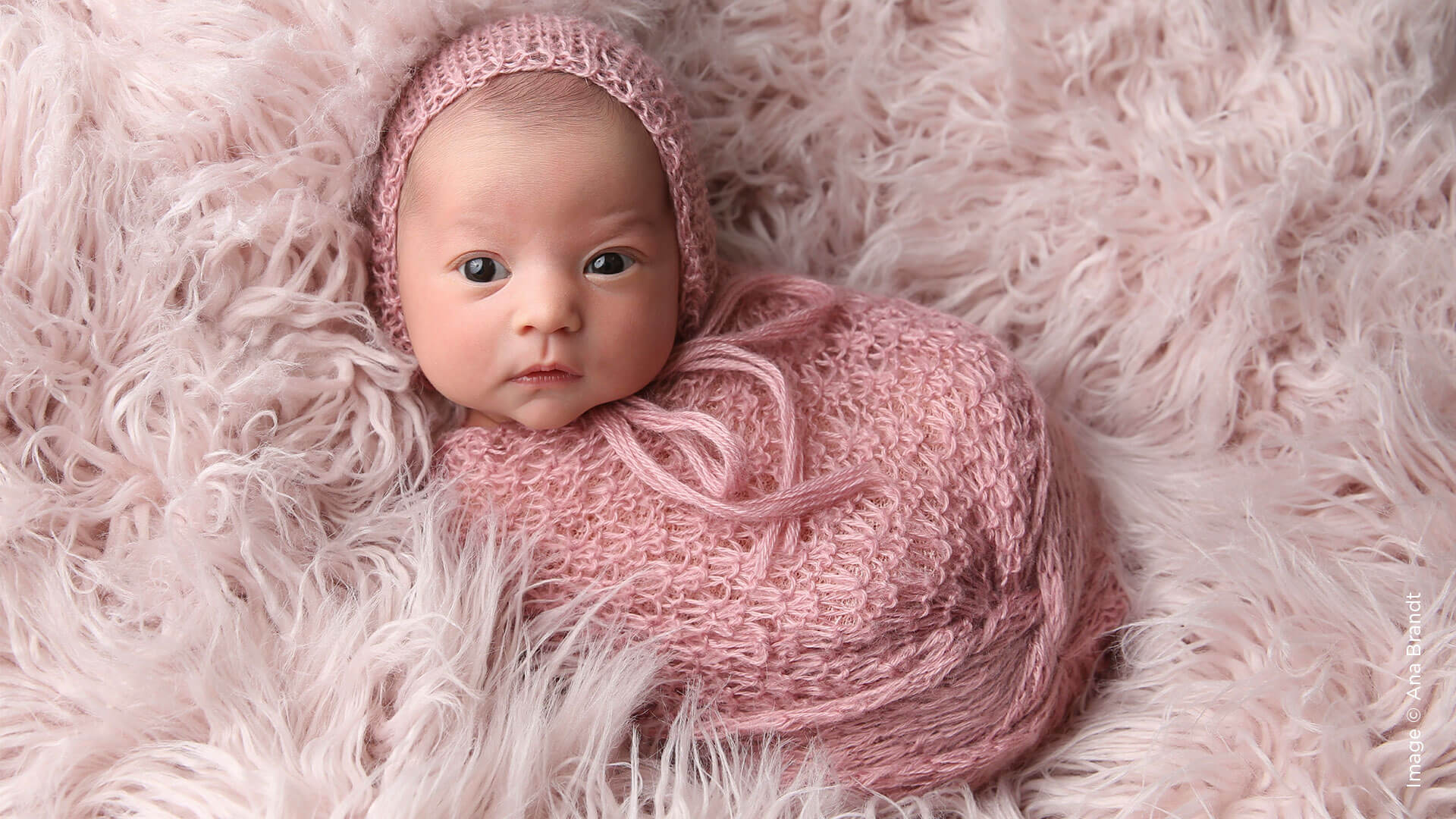Transitional Newborn Posing with Ana Brandt
Want more information on this article? Get access to video content and additional supporting images. Launch the June issue of the magazine by logging in or signing up for a free account by clicking here. Shutter Magazine is the industry’s leading professional photography magazine.
Photographing newborns is an amazing job that poses unique challenges. The most important thing I have learned over my 18 years of working with babies is that a smooth-running session requires transitional posing and planning for the next shot.
It may take 20 minutes to pose a baby in the perfect position, only to have her move in such a way that you have to start all over. Asistants are essential for planning the next shot while I’m creating the first one. By creating at least two to three variations that require very little movement of the baby, you can easily create several images that work well in a series or book.
Transitional posing can be as simple as adding or removing a hat or headband or changing your angle. By continually transitioning throughout a session, you can achieve a great variety for your gallery while keeping a seamless look.
When clients come in for a session, I have them choose their wrap and pick a few outfits, and I always recommend hats or headbands. I start with a wrapped baby because it’s the most comfortable way to start a session. Once the baby is settled, I can easily create another look by switching hats or headbands without disturbing him. I then begin a series of transitions by slowly adjusting the wrap and body angles, all while keeping the baby in the same basket.
I do not do any kind of pre-setup before the client comes. I wait until they arrive to see the kinds of poses and props they want. After they pick a few wraps and outfits, I plan two to three sets to start with. By having more than one set ready, I can quickly move from one to the next.
When babies are on a beanbag, I have a wrap handy, and add bonnets or headbands to transition as much as I can.
Transitional posing can work for any type of pose, whether you’re using a basket, prop or beanbag. But it can be challenging to get a baby into the perfect pose. Soothing, shushing and wrapping is so important, but what happens when the baby is naked and sound asleep and you already have the shot? In the transitional posing method, the idea is to move the baby slightly, without much movement. I capture two to three “look changes” with each pose.
I am always thinking ahead, planning my next move. The clients see that the movements are soft and subtle, the transitioning easy and gentle, and their baby is well cared for. They know they will have lots of images to choose from.
Sometimes just an angle change can count as a transition. Once you settle the baby, before you change poses, change angles.
In the first set of a newborn session, I’m able to capture three to seven looks without moving the baby. I always start with a diaper under the wrap because they have just eaten. I then slowly transition and end up with a naked baby before changing sets.
Transitioning can start with subtle movements. Once you have the shot, you want to perfect it. You can do this by transitioning just a little bit.
This next series of transitional posing is with the baby on a beanbag. Notice the baby is in the same pose. In three easy transitions, we show one angle, then a second angle, then naked.
I can easily add a hat or other prop, and continue the transition with little movement. There are usually slight adjustments with feet or hands, but the idea is to keep the baby in similar positions and then adjust. The adjustments can be minimal—such as adding or removing items—or actual poses.
If you have similar props or items handy, you can transition into totally different looks. In this example, I started with a simple baby wrap and then added other colors of layers to transition with hardly any movement to the baby.
Transitional posing allows you to gain babies’ trust as you work with them in a gentle manner. Photographers often do “baby led” transitioning, which means working with the baby’s movements. A stretch, yawn or turn of the head can all work in your favor if you are ready.
Another great reason for transitional newborn posing is that, by making slight adjustments, you can learn to perfect your work. We are always trying to grab the perfect pose, which is often discovered while transitioning. Rarely is my first shot the best; after a series of slight changes and movement, I can study the baby, angles and light to find the gems.
Want more information on this article? Get access to video content and additional supporting images. Launch the June issue of the magazine by logging in or signing up for a free account by clicking here. Shutter Magazine is the industry’s leading professional photography magazine.




